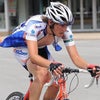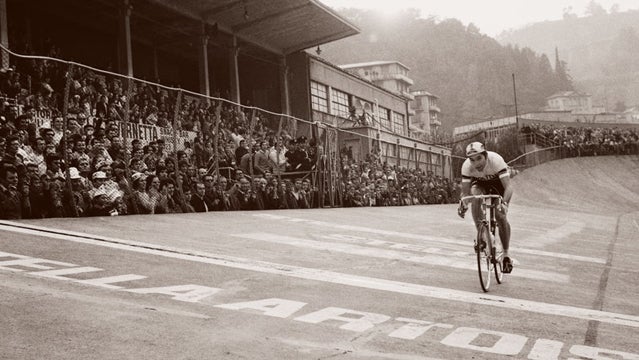ABSTRACT: Eddy Merckx had a simple formula for success: “ride lots.” It’s hard to argue with the results of the greatest cyclist of all time, but that hasn’t stopped every weekend warrior, time-pressed athlete, and coach from asking the question: Is there a better, faster way to train? Some say yes—that “,” or a diet of intervals is the answer—while others stand steadfast by the Cannibal’s logic. Paraphrasing the great Belgian, the only way to get faster is to ride until your butt falls off, they say. So which is it, and might there be a middle road?
HYPOTHESIS: Forget long, slow distance training and go for a polarized approach: Spend most of your time going easy (80 percent), and the rest going hard (20 percent) to get the best of both worlds.
METHODOLOGY: The literature is rife with studies showing the benefits of low-intensity and high-intensity training. Now, the has tackled the question in one study.
Researchers recruited 12 well-trained male cyclists (think: beginner racers) and split them into two groups after allowing for a four-week-long de-training period. One group followed a polarized plan, while the others followed a threshold regime (more on both in a bit). After six weeks, the researcher tested the cyclists, put both groups on a de-training regimen, and had them swap training approaches. After another six weeks of training, they were tested again.
Before we get into the results, a word on the training. Riders on the polarized plan were assigned to ride three times a week, spending 80 percent of their time in Zone 1 (0-65 percent of peak power output [PPO], and 20 percent of their time in Zone 3 (80 percent of PPO and up). For their Zone 3 training, they did six intervals of four minutes five-10 percent above their lactate turn point (essentially, ) with two minutes of rest between efforts. Riders on the threshold plan spent 60 minutes a session in Zone 2 (between 65 and 80 percent of PPO). Both groups got in 20 minutes of Zone 1 per session, and performed two to three Zone 1 training sessions per week outside of the lab.
RESULTS: Riders on the polarized plan saw greater gains across the board. Specifically, they increased their lactate threshold by nine watts, compared to only a a two-watt gain in the threshold plan.
DISCUSSION: Before you toss out your training plan, it’s important to understand that the terminology in the study departs from what most coaches are using stateside, says John Verheul, head coach at . “A lot of people are going to look at the study and see the title threshold, and assume that it’s threshold without digging in and finding out that it’s really just tempo,” he says. In the U.S., threshold is often associated with Functional Threshold Power, or the maximum power you can put out for an hour. In the study, the threshold training group wasn’t hitting those numbers—they were training squarely in Zone 2, and the riders in the polarized plan were training in the Vo2 max zone, no higher. In other words, the study compares a tempo-based training plan to a Vo2 max plan—and the latter wins out.
The problem: Most coaches aren’t advocating a tempo-based approach or a polarized plan, but a mix of both schools, says Chris Mayhew, an associate coach at JBV Coaching. That’s because what works over the course of a study might not work for an entire season, he says. Riders in the polarized group trained for approximately six hours a week and had a day of rest between each session. In contrast, your typical well-trained athlete is going to be riding 10-15 hours a week. Scale up the hours, and things become more complicated. “You don’t use it [high intensity training] for more than four, six, eight weeks because you know you’re going to crack an athlete or stop seeing gains, and it’s just too mentally difficult at that point,” Verheul says. “Doing high intensity all the time isn’t particularly sustainable.”
According to an analogy popularized by founder, Allen Lim, Ph.D., training is like where the bag is your potential fitness. Too much heat—think: intensity—and you burn the popcorn. Too little, and you’re left hungry. The key to a successful season is adjusting the level of heat to pop the maximum number of kernels, Mayhew says. Often, that means saving the intensity for the final six or so weeks out from your main event and beforehand building a large base of true threshold and tempo work, he says. Unfortunately, the study doesn’t examine training over a period longer than six weeks or a mix of multiple training approaches, but its lead author, Stuart Galloway, Ph.D., says that “it would seem logical that to sustain adaptation you need to not only increase the load/volume but vary the stimulus.”
What is clear: The polarized model led to approximately twice the gains observed in a the “threshold model” in less time. And because many recreational athletes are not training 10-15 hours a week for months at a time, varying their routine with higher intensity will lead to larger gains—without the risk of burning out inherit in higher training loads, Verheul says.
CONCLUSION: If you’re an elite athlete, incorporate most of your high intensity training into the final six to eight weeks leading up to a goal race and then taper for 10 to seven days. If you’re riding without a goal, hop on the polarized bandwagon for a bigger boost in less time.


